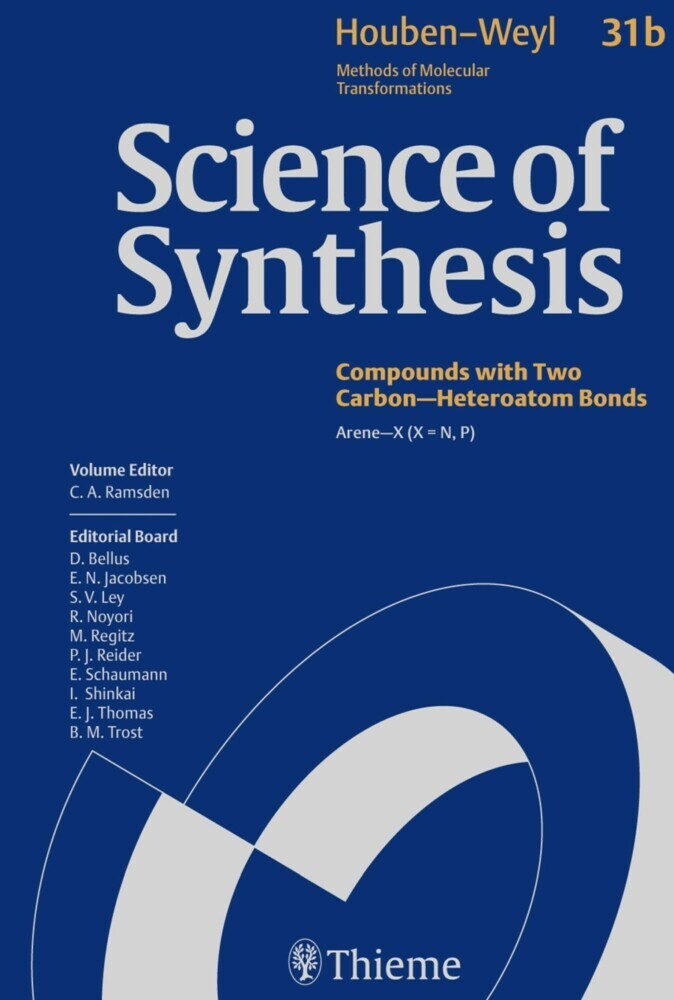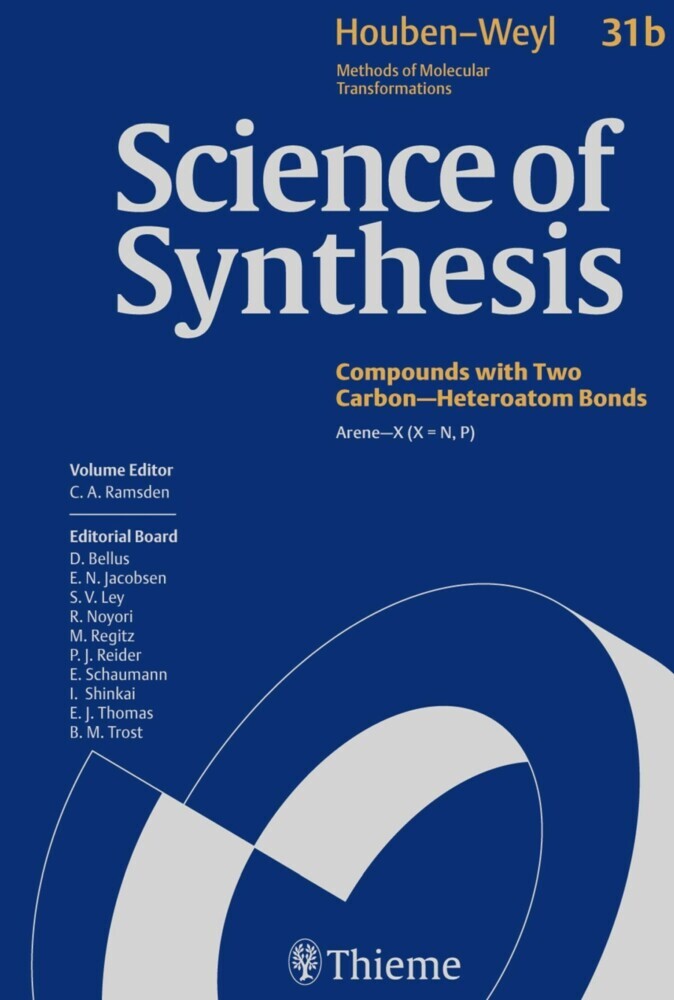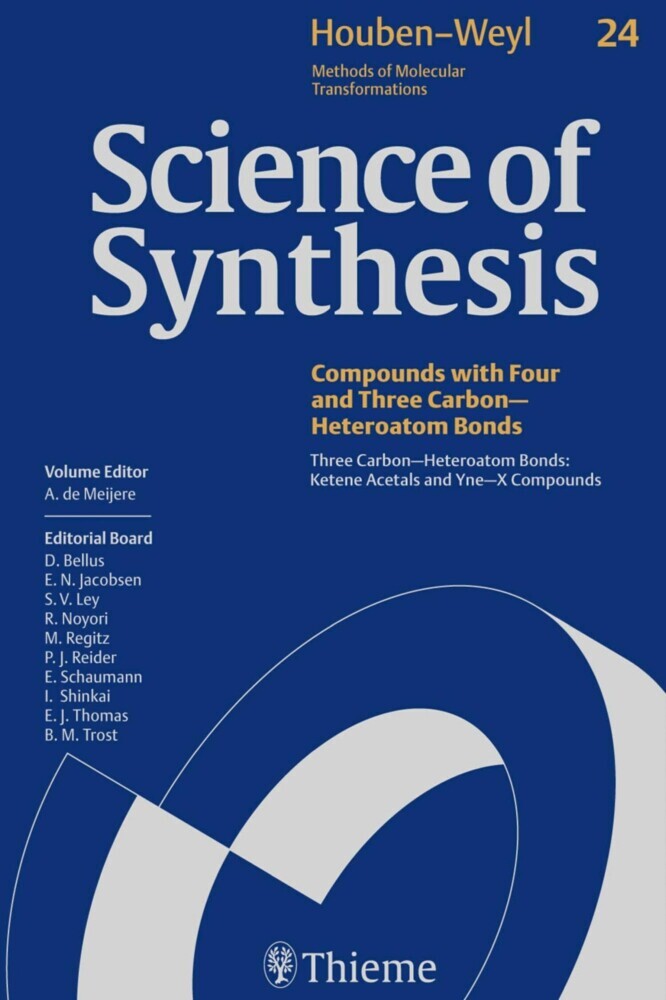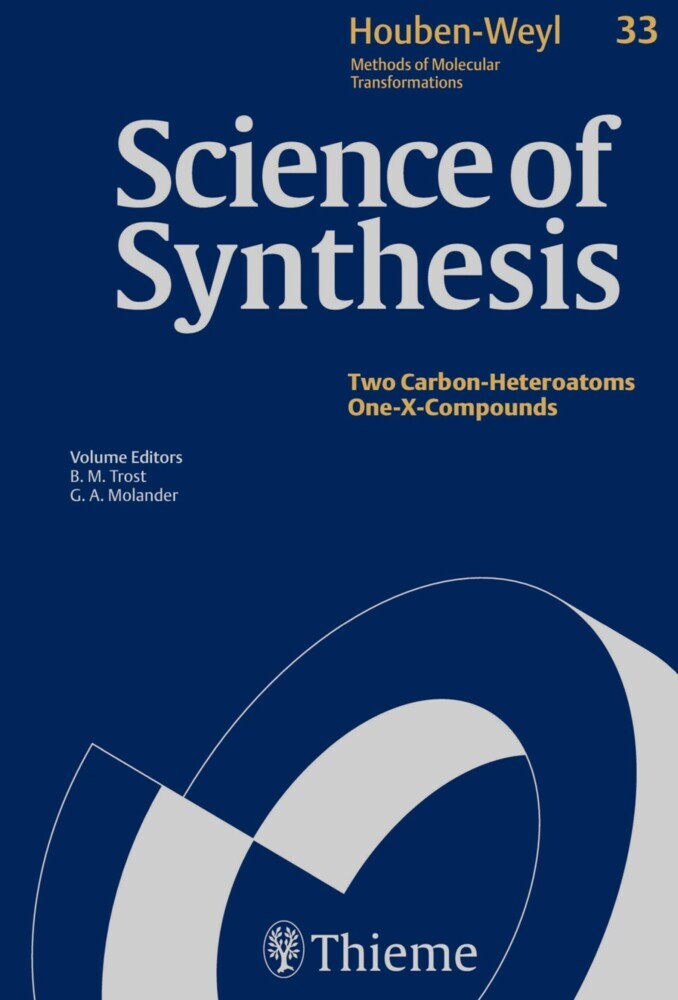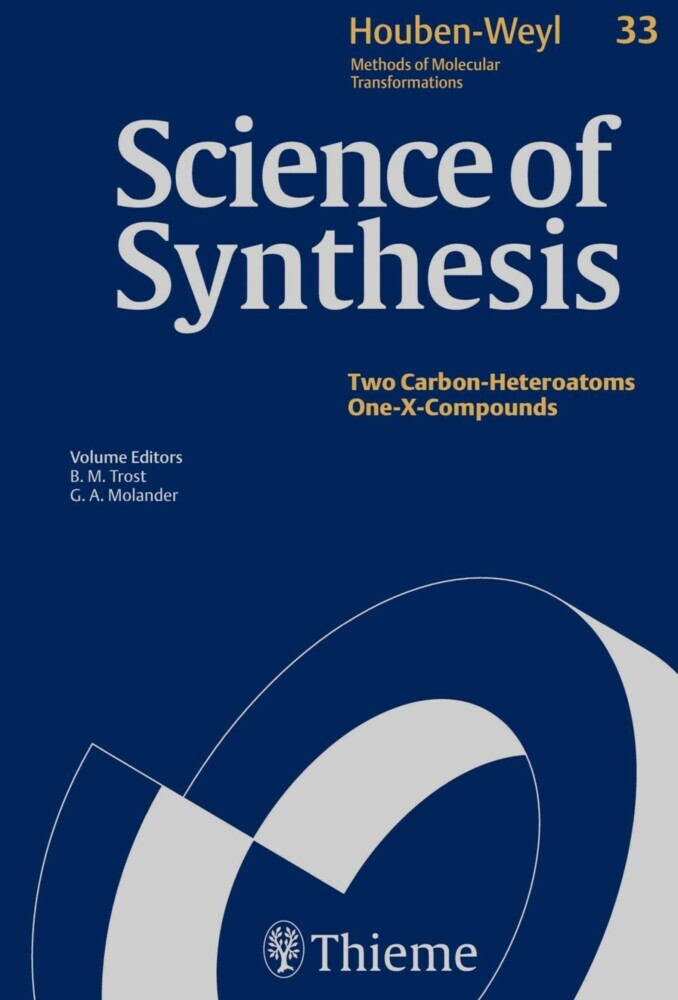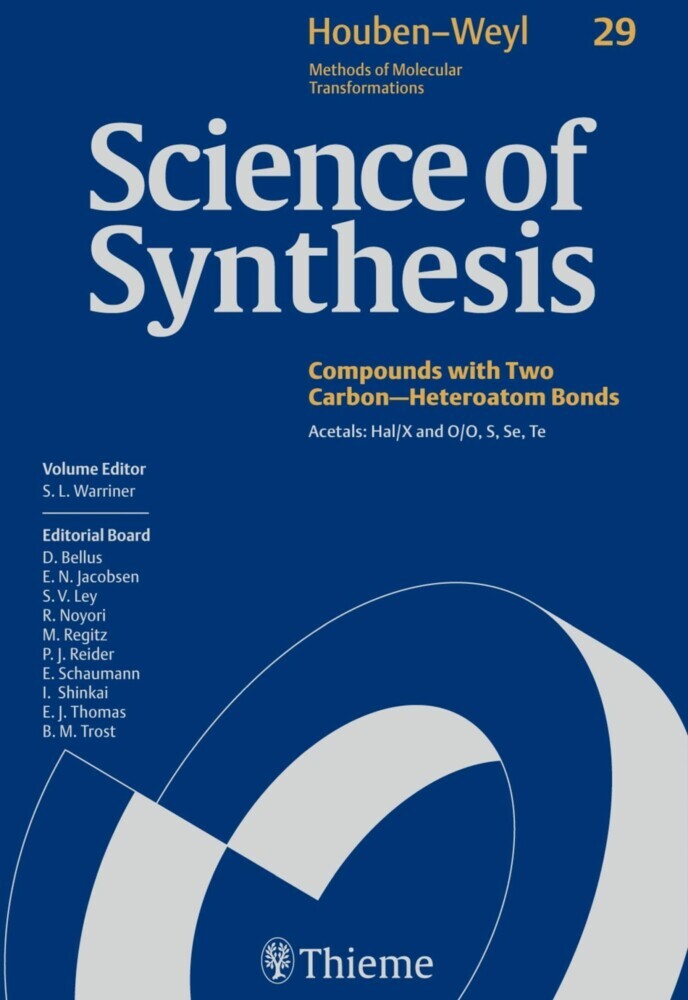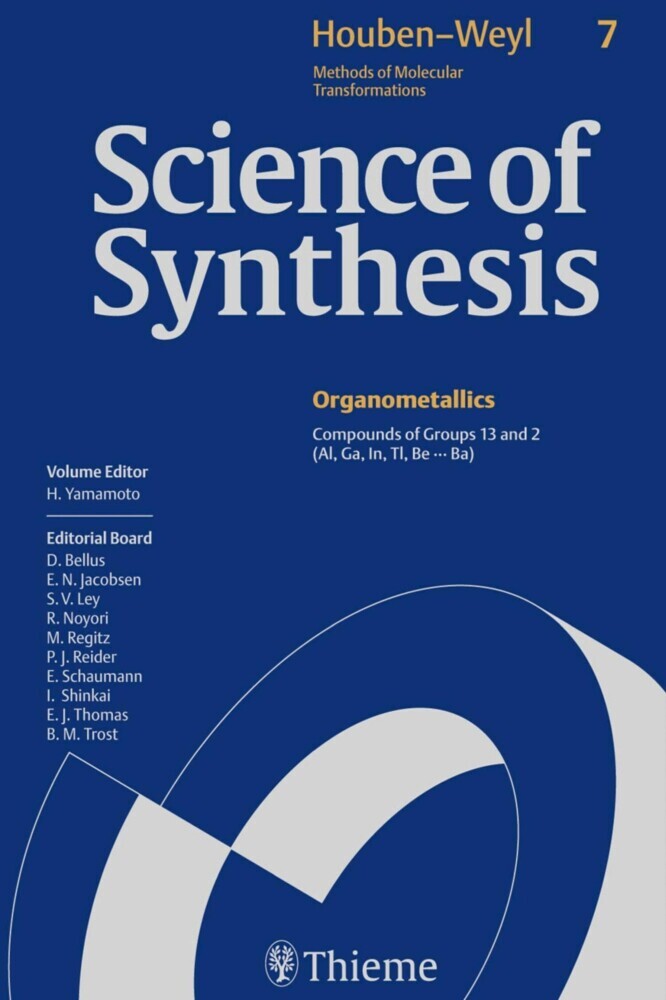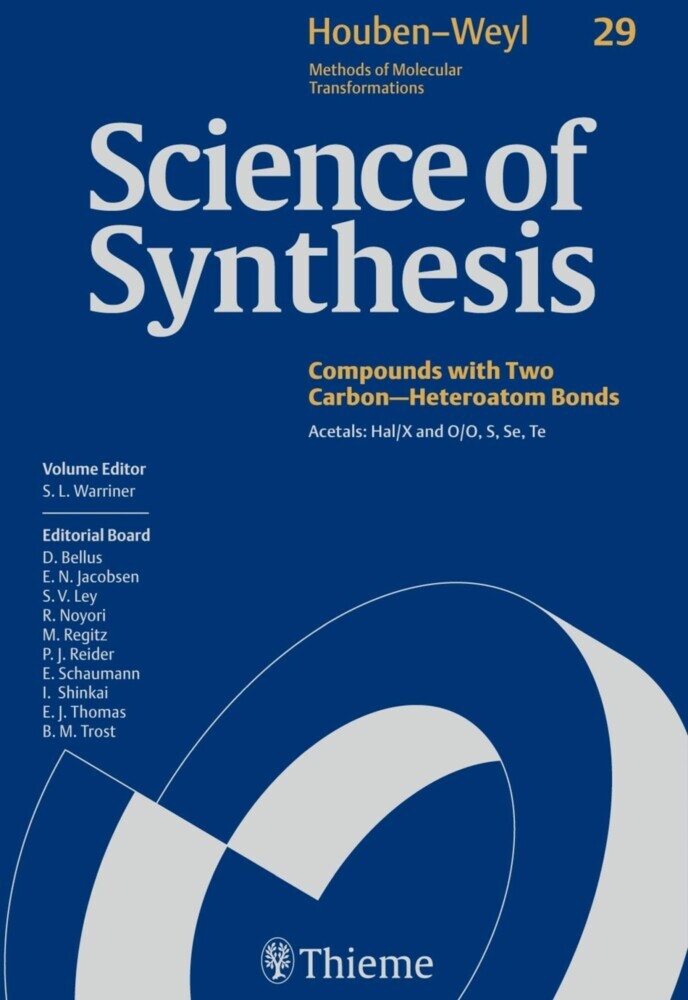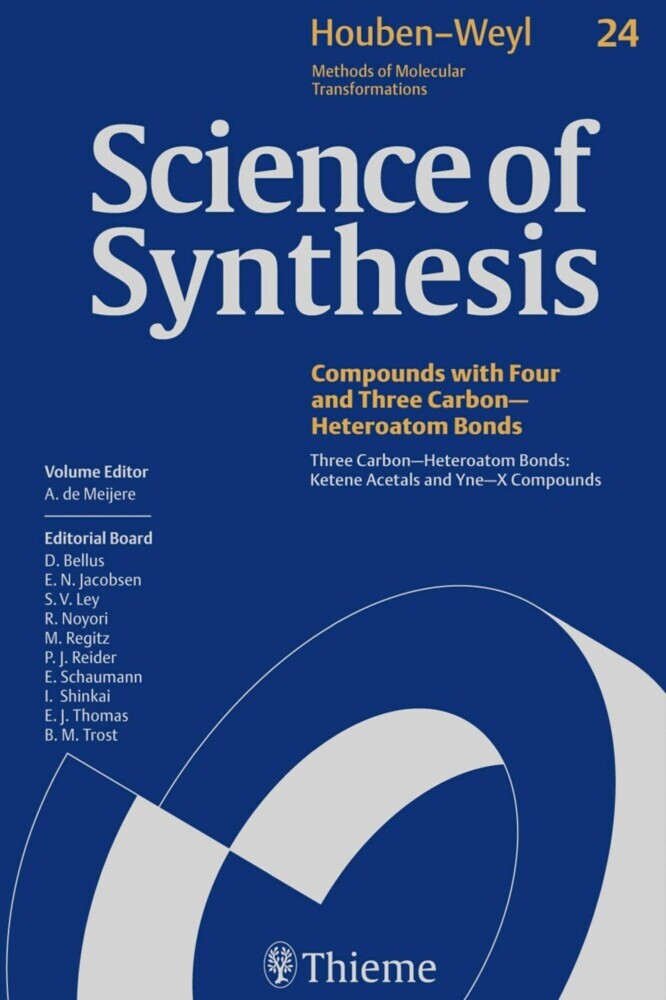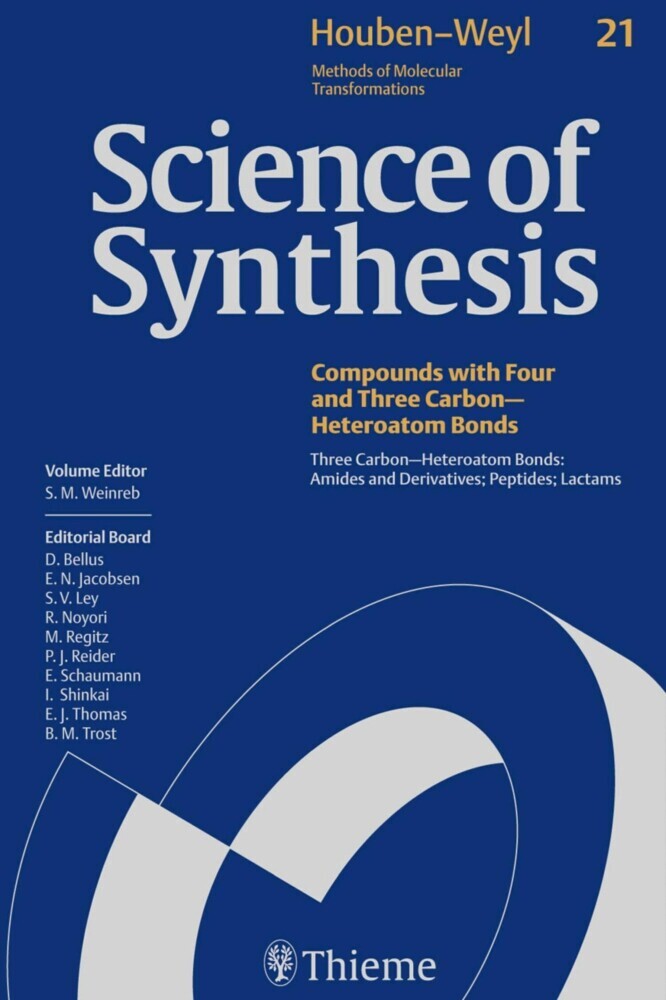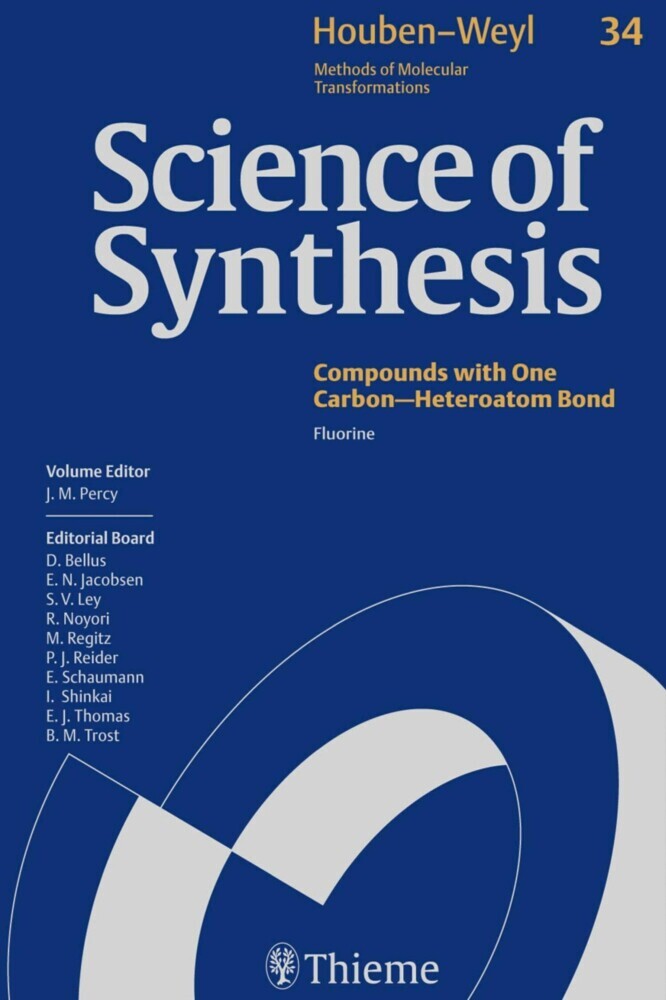Science of Synthesis: Houben-Weyl Methods of Molecular Transformations Vol. 31b
Arene-X (X=N, P)
Science of Synthesis: Houben-Weyl Methods of Molecular Transformations Vol. 31b
Arene-X (X=N, P)
Science of Synthesis: Houben-Weyl Methods of Molecular Transformations is the entirely new edition of the acclaimed reference series Houben-Weyl, the standard synthetic chemistry resource since 1909. This new edition is published in English and will comprise 48 volumes published between the years 2000 and 2008.
Science of Synthesis is a quality reference work developed by a highly esteemed editorial board to provide a comprehensive and critical selection of reliable organic and organometallic synthetic methods. This unique resource is designed to be the first point of reference when searching for a synthesis strategy.
- Contains the expertise of presently 400 leading chemists worldwide
- Critically evaluates the preparative applicability and significance of the synthetic methods
- Discusses relevant background information and provides detailed experimental procedures
For full information on the Science of Synthesis series, visit the Science of Synthesis Homepage
1;Science of Synthesis - Volume 31b: Arene--X (X = N, P);1 1.1;Title page;3 1.2;Imprint;5 1.3;Preface;6 1.4;Volume Editor's Preface;8 1.5;Overview;10 1.6;Table of Contents;12 1.7;31.21 Product Class 21: Nitroarenes;46 1.7.1;31.21.1 Synthesis of Product Class 21;46 1.7.1.1;31.21.1.1 Method 1: Substitution of Hydrogen Using Nitric Acid Alone;46 1.7.1.1.1;31.21.1.1.1 Variation 1: Using Dilute Nitric Acid;46 1.7.1.1.2;31.21.1.1.2 Variation 2: Using Concentrated Nitric Acid;48 1.7.1.1.3;31.21.1.1.3 Variation 3: Using Fuming Nitric Acid;49 1.7.1.1.4;31.21.1.1.4 Variation 4: Using Nitric Acid on a Solid Support;51 1.7.1.1.5;31.21.1.1.5 Variation 5: Using Nitric Acid in an Ionic Liquid;53 1.7.1.2;31.21.1.2 Method 2: Substitution of Hydrogen Using Nitric and Sulfuric Acids;54 1.7.1.3;31.21.1.3 Method 3: Substitution of Hydrogen Using Nitric and Acetic Acids;57 1.7.1.4;31.21.1.4 Method 4: Substitution of Hydrogen Using Nitric and Acetic Acids with Additional Acid Catalysts;59 1.7.1.5;31.21.1.5 Method 5: Substitution of Hydrogen Using Nitric Acid and Acetic Anhydride;60 1.7.1.6;31.21.1.6 Method 6: Substitution of Hydrogen Using Nitric Acid and Acetic Anhydride--Acetic Acid;61 1.7.1.7;31.21.1.7 Method 7: Substitution of Hydrogen Using Nitric and Trifluoroacetic Acids;61 1.7.1.8;31.21.1.8 Method 8: Substitution of Hydrogen Using Nitric Acid and Trifluoroacetic Anhydride;61 1.7.1.9;31.21.1.9 Method 9: Substitution of Hydrogen Using Nitric Acid and Other Acids;62 1.7.1.9.1;31.21.1.9.1 Variation 1: Using Nitric and Trifluoromethanesulfonic Acids;62 1.7.1.9.2;31.21.1.9.2 Variation 2: Using Nitric and Hydrochloric Acids;62 1.7.1.9.3;31.21.1.9.3 Variation 3: Using Nitric and Fluorosulfonic Acids;63 1.7.1.9.4;31.21.1.9.4 Variation 4: Using Nitric and Triflatoboric Acids;63 1.7.1.9.5;31.21.1.9.5 Variation 5: Using Nitric Acid and Trifluoromethanesulfonic Anhydride;64 1.7.1.9.6;31.21.1.9.6 Variation 6: Using Nitric Acid and Phosphorus Pentoxide;65 1.7.1.9.7;31.21.1.9.7 Variation 7: Using Nitric Acid and Brønsted Acidic Ionic Liquids;65 1.7.1.10;31.21.1.10 Method 10: Substitution of Hydrogen Using Alkali Metal Nitrates and Brønsted Acids;65 1.7.1.10.1;31.21.1.10.1 Variation 1: Using Sulfuric Acid;66 1.7.1.10.2;31.21.1.10.2 Variation 2: Using Acetic Acid;69 1.7.1.10.3;31.21.1.10.3 Variation 3: Using Hydrofluoric Acid;69 1.7.1.10.4;31.21.1.10.4 Variation 4: Using Hydrochloric Acid;70 1.7.1.10.5;31.21.1.10.5 Variation 5: Using Trifluoroacetic Acid;70 1.7.1.10.6;31.21.1.10.6 Variation 6: Using Boron Trifluoride Monohydrate;71 1.7.1.11;31.21.1.11 Method 11: Substitution of Hydrogen Using Nitric Acid or Its Salts and Lewis Acid Catalysts;72 1.7.1.11.1;31.21.1.11.1 Variation 1: Using Nitric Acid and Tin(IV) Chloride;72 1.7.1.11.2;31.21.1.11.2 Variation 2: Using Alkali Metal Nitrates, Aluminum Trichloride, and Chlorotrimethylsilane;73 1.7.1.11.3;31.21.1.11.3 Variation 3: Using Alkali Metal Nitrates and Iron(III) Chloride or Titanium(IV) Chloride;73 1.7.1.11.4;31.21.1.11.4 Variation 4: Using Nitric Acid and Indium(III) Bis(trifluoromethylsulfonyl)amide;74 1.7.1.11.5;31.21.1.11.5 Variation 5: Using Nitric Acid and Lanthanide or Group 4 Metal Trifluoromethanesulfonates;74 1.7.1.11.6;31.21.1.11.6 Variation 6: Using Nitric Acid and Other Lanthanide Perfluoroalkanesulfonates;75 1.7.1.11.7;31.21.1.11.7 Variation 7: Using Nitric Acid and Lanthanide Arenesulfonates;76 1.7.1.12;31.21.1.12 Method 12: Substitution of Hydrogen Using Nitric Acid or Its Sodium Salt with Another Metal Nitrate;76 1.7.1.12.1;31.21.1.12.1 Variation 1: Using Sodium Nitrate, Hydrogen Chloride, and Lanthanum(III) Nitrate;76 1.7.1.12.2;31.21.1.12.2 Variation 2: Using Nitric Acid and Mercury(II) Nitrate with an Acid Resin;76 1.7.1.13;31.21.1.13 Method 13: Substitution of Hydrogen Using Nitric Acid and Mercury(II), Thallium(III), or Lead(IV) Acetate;77 1.7.1.14;31.21.1.14 Method 14: Substitution of Hydrogen Using Nitric Acid and Ammonium Molybdate;77 1.7.1
Alan Aitken, R.
Ramsden, Christopher A.
| ISBN | 9783131720719 |
|---|---|
| Artikelnummer | 9783131720719 |
| Medientyp | E-Book - PDF |
| Copyrightjahr | 2014 |
| Verlag | Georg Thieme Verlag KG |
| Umfang | 1092 Seiten |
| Sprache | Englisch |
| Kopierschutz | Digitales Wasserzeichen |

